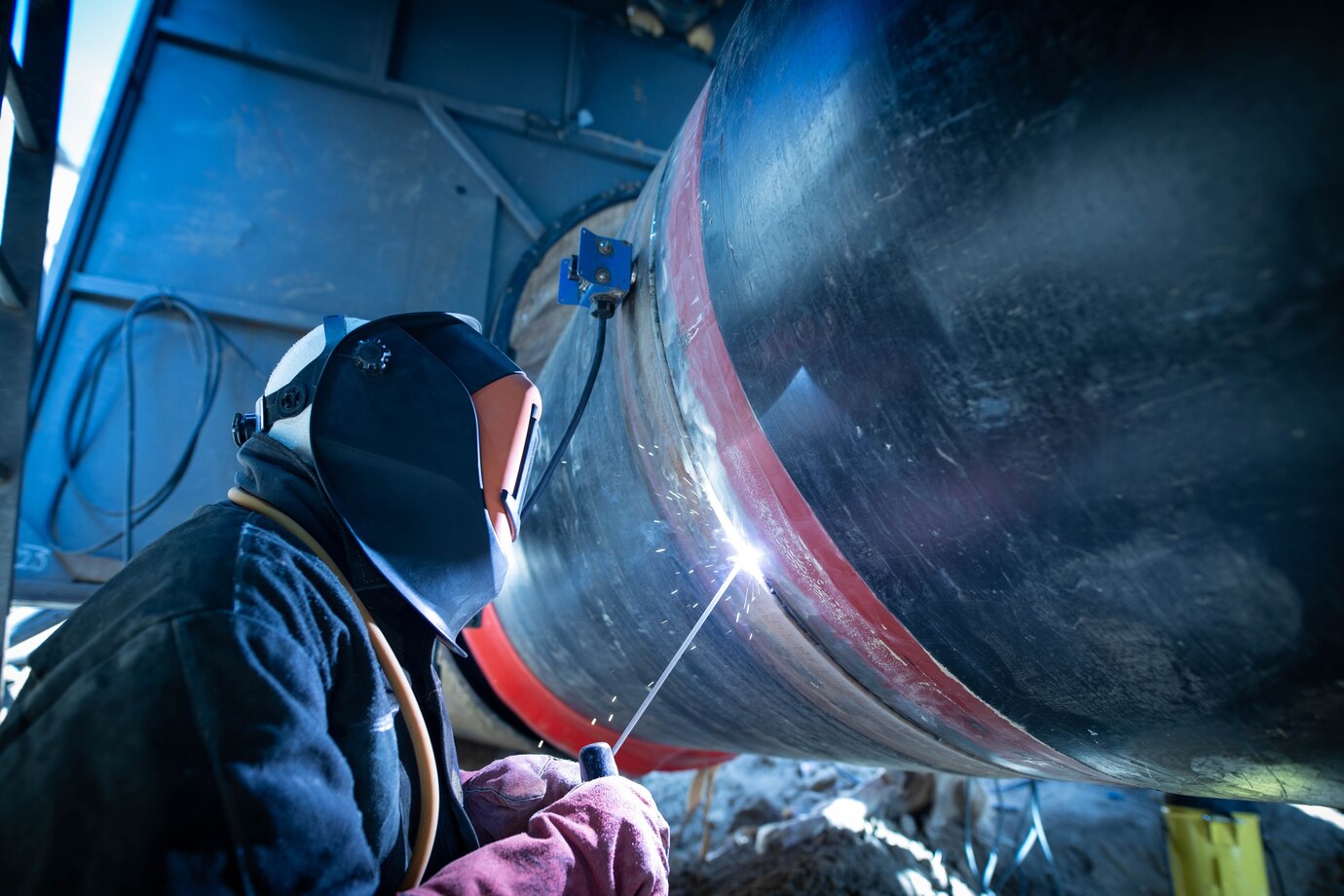Common Tank Maintenance Challenges and the Role of Industrial Painting
Various production sectors, such as oil and gas, chemical processing, water treatment, and food manufacturing, heavily depend on industrial tanks for storage. These storage units require appropriate maintenance to survive more extended periods with safe and optimal system performance.
Many problems develop in tanks over time, resulting in high repair expenses, system downtime, and safety threats when such issues go unaddressed. Industrial painting is one of the best solutions to most tank maintenance problems.
This blog will discuss common problems with sand blasting tanks maintenance and how industrial painting services address them.
Common Issues in Tank Maintenance
1. Corrosion and Rust Formation
Exposure to environmental factors, contact with water, and harmful substances make metal tanks susceptible to corrosion formation. Rust development weakens tank frameworks through a slow process, leading to failures such as leakage, dangerous substance contamination, and even causing a complete system breakdown.
2. Chemical Damage
Chemical substances specifically harm sand blasting tanks that are used for chemical preservation. Chemicals in contact with coated metal surfaces damage the protective layer, leading to surface pitting that develops into cracking. Protective measures such as painting establish a barrier against chemicals that helps tanks maintain extended operational periods.
3. Structural Weakness and Leaks
The combined impact of weather elements, pressure changes, and corrosion agents permanently damages the tanks’ frameworks. The tank’s ability to perform suffers from material deterioration, leaks, and cracks, representing environmental dangers and safety risks.
4. Buildup of Contaminants and Residues
Tank storage systems progressively collect multiple types of contaminants, from sludge to sediments and microbial populations. Such accumulation of materials within storage tanks disrupts material quality, reduces efficiency, and causes pipe obstructions and cross-contamination.
5. Poor Aesthetic Appearance
Tanks that endure outside weather conditions, including sunlight, rain, and pollution, usually show paint discoloration with accompanying surface peeling and fading. Industrial painting is not only about aesthetics but also a helpful step in maintaining the strength and safety of industrial facilities. A new coating with proper maintenance produces appealing tanks that protect against additional damage.
How Industrial Painting Services Help
The maintenance of industrial tanks relies heavily on industrial painting to address many problems. Industrial painting services create durable protective coverings that increase tanks’ operational lifespans and boost their performance capabilities. Here is how industrial painting services contribute to tank maintenance:
1. Corrosion Prevention and Protection
Industrial coatings create a protective layer that keeps external elements isolated from touching the metal surface of the tank. Professional coatings provide the tank with superior corrosion protection, leading to extended service and lowering maintenance expenses. Anti-corrosion paint coats are essential in shielding metals from rust and decay.
2. Chemical-Resistant Coatings
Specialized coatings provided by industrial painting services prevent chemical interactions with storage tanks that contain chemicals. These external defenses safeguard storage tanks from material breakdown and surface wear and stop structural damage that could lead to operational breakdowns when tanks face aggressive environmental exposures.
3. Leak Prevention and Structural Reinforcement
High-performance industrial coatings protect tanks because they expand their structural integrity by filling cracks to stop leaks. Polyurea and elastomeric provide high-performance protective solutions for tanks. They deliver flexible, durable protection against pressure-related damage and external exposures.
4. Enhanced Hygiene and Contamination Control
Water treatment facilities and food production plants require absolute cleanliness, which is critical to their operations. The FDA-compliant coating applied to tanks consists of non-toxic paints that inhibit microbial development, allow easy maintenance, and follow industry requirements.
5. Weather and UV Protection
Tanks placed outside in an open environment need proper UV-resistant paint applications to avoid surface deterioration, fading, and chalking damage. Industrial painting firms use weather-resistant paints to protect from sun radiation, rain and snow conditions, and temperature variations.
6. Improved Aesthetics and Identification
Applying new paint layers makes industrial storage containers look better and performs a protective function. Most industries rely on color-based coating systems for safety because they enable quick identification of tank contents and ease of assessing hazardous materials.
7. Compliance with Industry Standards
Regulatory authorities mandate that industrial tank maintenance requires specified protective coatings as safety measures against leakages and environmental contamination. Business organizations with expert industrial painting assistance fulfill all regulatory standards to prevent penalties and legal troubles.
Choosing the Right Industrial Painting Service
Professional companies that understand tank maintenance requirements must be hired by organizations that want to optimize industrial painting benefits. Evaluation of selection criteria for industrial painting firms includes the following methods.
- Experience and Expertise: Look for a firm that demonstrates strong capabilities in maintaining and painting industrial tanks through its previous work.
- Use of High-Quality Coatings: Seek service providers who apply industry-approved coatings suitable for your tank materials and fluid contents.
- Surface Preparation Methods: Fundamental surface preparation methods for industrial painting should include sandblasting or abrasive blasting because they establish enduring protective mechanisms and strong adhesive systems.
- Compliance and Safety Precautions: The painting contractor must comply with industry safety standards and industry guidelines to achieve high-quality, completely risk-free results in their work.
- Custom Solutions: Every tank is different. An established painting company should deliver personalized solutions that depend on the tank’s maintenance status, the extent to which it is exposed to elements, and how it is utilized.
Conclusion
Industrial tanks encounter multiple maintenance hurdles that involve corrosion issues, chemical damage to structures, weakening mechanisms, and contamination threats. The protective coatings provided by industrial painting resolve such problems while improving their sustainability, safety parameters, and legal requirements.
Professional sand blasting tanks services represent a prominent business investment that extends the tank’s operational life and lowers maintenance expenses while sustaining overall operational efficiency.
Hiring professional industrial painters is the best solution for preserving your tanks through extended life and optimal conditions!













Post Comment